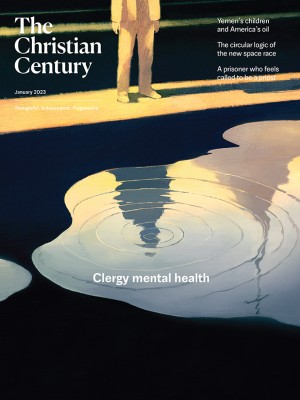January 6, Epiphany of the Lord A (Matthew 2:1-12)
It must have been a strange sight: grown adults, prostrate before a toddler.
For five unusual days in September, a queue stretched ten miles across London. Through the night, in the cold, clutching cups of tea, befriending the strangers who waited alongside them, 250,000 people waited to view the coffin of Queen Elizabeth II. Some queued out of grief, some from curiosity; some came because waiting patiently in line for more than 24 hours seemed like the most British act possible, a kind of patriotic performance art.
At last, one by one, they entered Westminster Hall. A livestream showed them looking around, wide-eyed, at the majestic architecture and the glittering crown jewels atop the casket. They took turns filing forward to stand before the catafalque. Each one paused for a moment in silence, and then, in a gesture more medieval than modern, in unrehearsed sincerity and earnest awkwardness, they bowed or curtsied.
Read our latest issue or browse back issues.
I grew up in New England, where the American Revolution feels like family history. Even 245 years later, we pride ourselves on our role in rejecting monarchy. Curtsies to the queen were definitely not part of my formation. And Congregationalists don’t bow to anything else, either. We’ll stand up for hymns, but we make no other liturgical gestures: no genuflection, no kneeling.
As an ecumenist, I’ve learned to preside at the Eucharist in high church Lutheran contexts. But the first time a friend talked me through the ritual I was utterly baffled. “I raise the bread, then set it down and make a deep bow,” she said. A deep what? The first time I attempted it, I felt off-kilter and self-conscious. The motion was foreign. And the theology was strange, too. Did I really believe in this? Was this something I could do?
The King James Version and many that have followed it suggest that the Magi, on finally reaching the home of Jesus, “fell down and worshiped him.” More recent translators have altered that language. The verb prosekynēsis can certainly have the connotation of worship, as it often did in ancient Greece and as it does elsewhere in Matthew’s Gospel. But it can also refer to acts offered by a person to a respected superior: from a vassal to a lord, for example. Like other modern translations, the New Revised Standard Version elects the latter option to describe the Magi: “They knelt down and paid him homage.”
These erudite astrologers had searched the heavens, gathered precious gifts, and made a long journey. They had searched for a king in the sophisticated capital city. Then they were redirected to Bethlehem. They found a little village, a tired young mom, and a boy in diapers, playing with blocks. Whether or not they sported the elaborate robes and glittering crowns that they often wear in art—probably not, as that wouldn’t have been the most practical travel garb—it must have been a strange sight: grown adults, prostrate before a toddler.
And yet they bowed without hesitation, even with exceeding joy. Their deference was genuine. This was not the first king they’d met this week: the Magi had just been in Herod’s court, but there is no indication that they paid him homage. Instead, their reverence was reserved for this child, the one they had been seeking, the one the world had been waiting for. They recognized him immediately. Like the patient queuers at Westminster Hall, the circumstance demanded this unfamiliar, even awkward gesture: it was right and just.
I’ve never curtsied to a monarch, but back in the dim inherited recesses of my instincts, long suppressed by Reformation rigidity and American pride, there’s still somehow a longing to bow down. The example of the Magi shows that we need not kneel to those in formal power; we need not honor their sneering corruption and murderous envy. But we also need not dispense with deference all together. With exceeding joy, we can bow before the presence of the Divine wherever it is found.
Rumi, perhaps a compatriot of the Magi, says that “there are a thousand ways to kneel and kiss the ground.” And so, in our own ways, with bent knees or with humbled spirits, we can bow before bread, before babies, before people who are poor. We can pay homage to the vulnerable and marginalized. We can kneel before an ocean wave, a tree in full color, a honeybee. We can prostrate before signs of God’s love and evidence of God’s work. One by one, overcoming our awkwardness and self-consciousness, in exceeding joy, we can honor what is good and holy. In our own ways, we curtsy still.






